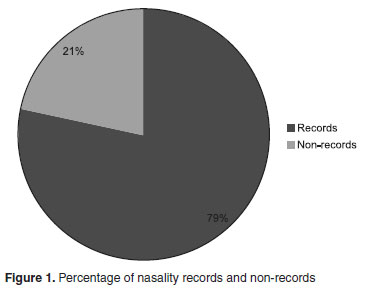PURPOSE: To verify how children in the last year of preschool register nasality in their writing, observing these registers regarding syllabic positions of onset and coda, as well as the phonological classes involved in substitution cases. METHODS: The material used came from a writing activity conducted with 19 children enrolled in the last level of preschool. It was carried out a guessing game, in which children should write the names of 24 fruits. Fifteen of those names showed nasality context. The main parameter for analysis was the syllabic position of nasal graphemes in Portuguese. RESULTS: Most children wrote down the nasality, with more occurrence in syllable onset position. In this position there was a higher number of conventional registers, while in coda position the non-conventional registers prevailed. Substitutions occurred mainly among graphemes that corresponded to the sonorants class. CONCLUSION: The relevance of syllabic constituents is high for the characterization of the points of lowest and highest difficulty in the acquisition of nasality in writing. It is also relevant how children retrieve phonetic-phonological similarities among nasal graphemes that they substitute and those that are substituted.
Handwriting; Child language; Learning; Child teaching; Language development




